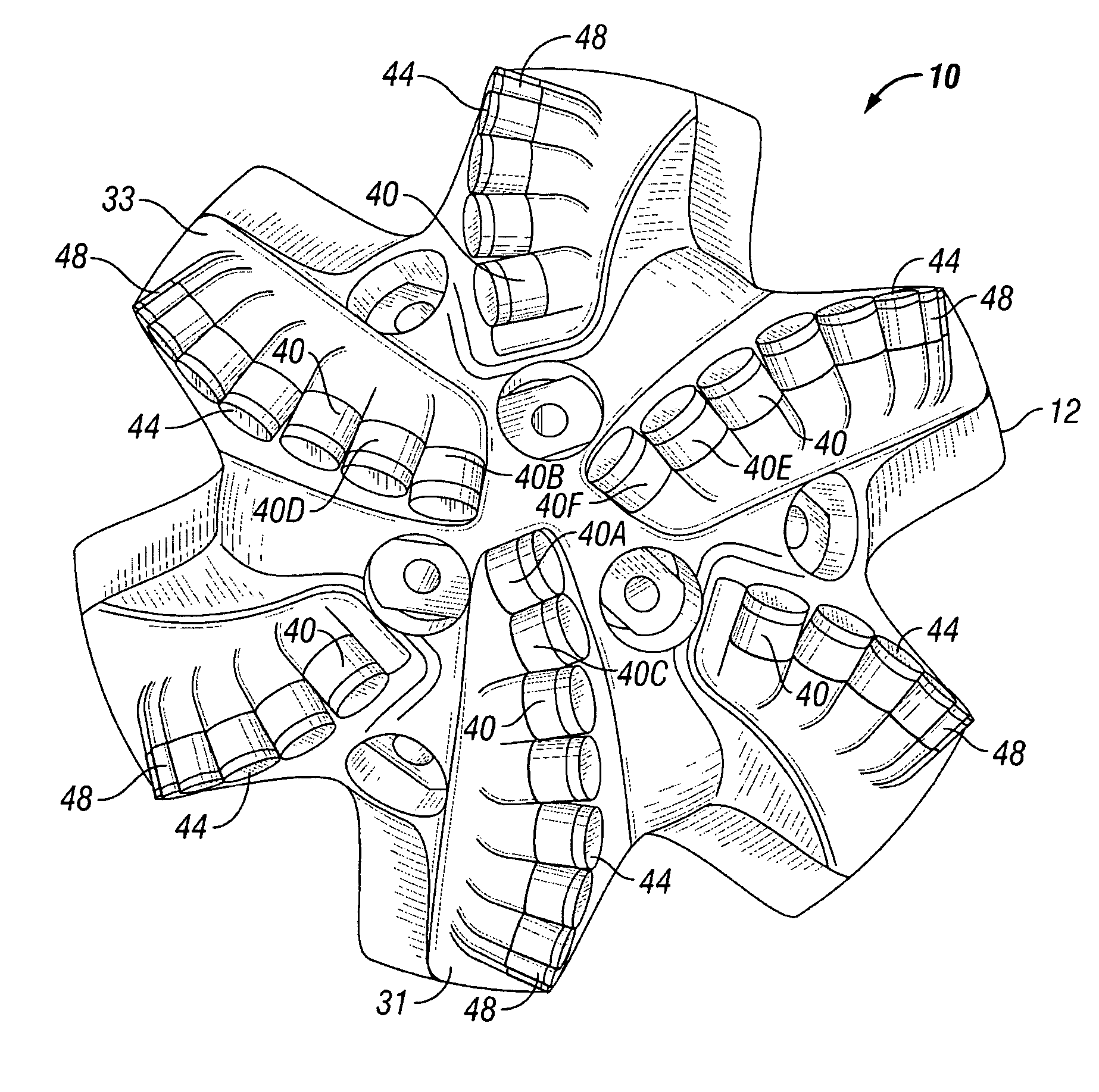Stress balanced cutting structure
a cutting structure and stress-balanced technology, applied in the direction of cad techniques, instruments, design optimisation/simulation, etc., can solve the problems of high cost of drilling a borehole for the recovery of hydrocarbons or minerals, ineffective hard rock formations of milled tooth roller cone bits, and inability to achieve the effect of hard rock formation recovery,
- Summary
- Abstract
- Description
- Claims
- Application Information
AI Technical Summary
Problems solved by technology
Method used
Image
Examples
Embodiment Construction
[0036] During drilling, the life of a drill bit is often limited by the failure rate of the cutting elements mounted on the bit. Cutting elements may fail at different rates depending on a variety of factors. Such factors include, for example, the geometry of the cutting element, position of the cutting elements on the bit, the orientation of the cutting element with respect to the formation being drilled, cutting element material properties, etc. In one aspect, embodiments of the present invention relate to a method of designing a fixed cutter drill bit to maintain mechanical stability of the bit and control the failure rate of the cutting elements. In another aspect, embodiments of the present invention relate to a fixed cutter drill bit with cutting elements mounted thereon so as to reduce the difference or variation of characteristic values associated with a failure mode between at least two cutting elements until the variation is within a predetermined range.
[0037] Embodiments...
PUM
 Login to View More
Login to View More Abstract
Description
Claims
Application Information
 Login to View More
Login to View More - R&D
- Intellectual Property
- Life Sciences
- Materials
- Tech Scout
- Unparalleled Data Quality
- Higher Quality Content
- 60% Fewer Hallucinations
Browse by: Latest US Patents, China's latest patents, Technical Efficacy Thesaurus, Application Domain, Technology Topic, Popular Technical Reports.
© 2025 PatSnap. All rights reserved.Legal|Privacy policy|Modern Slavery Act Transparency Statement|Sitemap|About US| Contact US: help@patsnap.com



